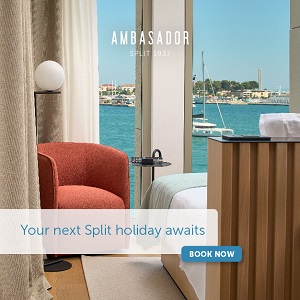Minister Says Gov't Will Propose that Most Sundays be Non-Working Days
ZAGREB, September 21, 2020 - Labour, Pension System, Family Affairs and Social Policy Minister Josip Aladrovic said on Monday that government officials would propose at a meeting to be held with trade unions later in the day that most Sundays be non-working Sundays while some would be working days.
The meeting to be held with trade unions is aimed at determining unions' expectations, the minister said.
"Our general view is that Sunday should be a non-working day but aside from that worldview... parameter, we must also take account of economic parameters and be aware of the situation we are in and try to make a compromise," Aladrovic said after the signing of an agreement on the establishment of a national council for pensioners and elderly persons.
The minister noted that if the government and unions managed to bring their views closer, he expected "a reasonable solution to be reached by the end of the year."
He said it was possible to find a solution also in the context of previous Constitutional Court rulings which abolished bans on Sunday trading.
Asked about doctors and nurses who have not been paid for overtime work, he said that the matter was not within his remit and therefore he could not comment on it but that "considering the government's latest decisions, there should be no problems with payment".
Asked about the problem of Brodotrogir dock workers who have not received their wages for two months, he said that the matter was being dealt with by the Economy Ministry and that he expected a more concrete solution to be found.
"There is the Agency for the Settlement of Workers' Claims, and we will turn to it if necessary," he said.
He described as tendentious President Zoran Milanovic's statement that it was not clear to him why JANAF oil pipeline operator CEO Dragan Kovacevic and businessman Kreso Petek had not been arrested at the moment when Petek gave a HRK 1.96 million bribe to Kovacevic, when police had recordings of the event.
"That's probably his own position. We believe in state institutions and believe they know what they are doing and that what they did made sense," Aladrovic said.
For the latest travel info, bookmark our main travel info article, which is updated daily.
Read the Croatian Travel Update in your language - now available in 24 languages
MEP, Chamber Say Farm to Fork Strategy is Chance for Croatian Farmers
ZAGREB, September 21, 2020 - The EU's Farm to Fork Strategy is an opportunity for Croatian farmers but a common fight is necessary to protect the domestic market, invest in technology and motivate youth to continue farming and stay in rural areas, MEP Biljana Borzan and the Croatian Chamber of Agriculture (HPK) said on Monday.
Speaking at a press conference, Borzan said it was necessary to transition to sustainable production in order to preserve soil, water and air.
She recalled that the EU planned, by 2030, to halve the use of pesticides and antibiotics in agriculture and to increase by 25% the land with ecological production.
In order to encourage the transition to sustainable production and consumption, the Farm to Fork Strategy envisages amending about 20 European laws and regulations and reviewing market standards for farm products.
Borzan said she would fight for the promotion of locally grown products, adding that Croatian farmers should be protected from products which did not meet European standards.
HPK president Mladen Jakopovic said Croatia met many ecological standards required in EU agriculture, adding that its advantages were a clean environment, the fact that it was GMO-free and had a diversified economy.
He warned, however, that excessive cheap imports, weak consumption and putting agriculture in a negative context had resulted in a production decline in all sectors.
Jakopovic said that in the past five years Croatia's agriculture production dropped 26%. Its value dropped from HRK 21 billion in 2012, before EU accession in mid-2013, to HRK 17 billion in 2019, he said, highlighing the negative foreign trade balance in cattle breeding.
He said that in order to contribute to the realisation of the Farm to Fork Strategy, farmers should have adequate financial support for the transition.
Trade agreements should not allow the import of goods which do not meet the EU's green standards, Jakopovic said, adding that every state should be at least 70% self-sufficient in the event of a crisis.
He said the HPK would compile a database of agricultural producer prices across the EU which would help to better enforce laws on unfair trade practices and show which EU country undermined the market with dumping prices.
For the latest travel info, bookmark our main travel info article, which is updated daily.
Read the Croatian Travel Update in your language - now available in 24 languages
Krunoslav Capak Announced Three New Rules for Testing and Isolation
September 21, 2020 - As a guest on N1 television, the Director of the Croatian Institute of Public Health Krunoslav Capak announced three new rules for testing and isolation.
Index.hr reports that Capak commented on the current situation with the coronavirus epidemic in Croatia and, among other things, outlined the priorities for testing and revealed the criteria for breaking isolation.
The document is ready; what is changing?
"Isolation will last 10 days. So far, we have had 14 days. The latest data show that a person has significantly lower infectivity after the seventh day. After day 10, the person is not contagious. There is no need to be in isolation for more than 10 days. If they did not have a temperature and symptoms in 24 hours, they can come out of isolation. The exception is severe cases.
As for the testing criteria, they do not change significantly, except that we have introduced pupils and students in dormitories and those who go to schools and colleges of the medical type, who will be treated as the medical staff.
The third important news is that so far, a positive person, a person who has proven confirmation that they have overcome the disease, does not have to go into self-isolation for three months even if they are in contact with an infected person.
Priority groups for testing are the elderly and those who work with them."
Will there be new measures?
"Today, we had 70 new cases, that is not a realistic number. We have fewer cases on Mondays because there are fewer tests on weekends. The number will surely be higher tomorrow. We have had a downward trend for two weeks now, and hopefully, it will continue."
The situation in counties
"There are no significant hotspots, this weekend we had the Gay Pride Parade and Vinkovci Autumn Festival, these are events that need to be followed."
Can you determine the sources of infection with certainty?
"It is usually easy to determine the source of the infection; in some 10 percent, we cannot know it immediately, but it is determined over time. In 90 percent of cases, we manage to find out the source of the infection. It is very difficult to determine if a person became infected in a club or restaurant.
Risky gatherings are weddings, family gatherings, and public gatherings."
About the fatalities
"At one time, at the end of August, we had several new cases. It takes time for a more severe form of the disease to develop and for a person to go on a ventilator and for a negative outcome to occur. Mortality and death always accompany new cases for three to four weeks. We now pay tribute to several patients during August.
People who are hospitalized are those who have more severe symptoms, chronic illness, or some other comorbidity. There are about 2,500 of them, and since the beginning of the epidemic until today, slightly less than 10 percent of those seriously ill have died."
For the latest travel info, bookmark our main travel info article, which is updated daily.
Read the Croatian Travel Update in your language - now available in 24 languages
Croatia Features on Safe Harbor TV Show as Safe and Desirable Nautical Destination
September 21, 2020 - Croatia features on Safe Harbor, a show on the Nautical Channel, as a safe and desirable nautical destination.
HRTurizam reports that the Croatian Tourist Board promoted nautical tourism on the TV show "Safe Harbor", which airs on the Nautical Channel and is watched by more than 200 million viewers in over 100 countries around the world.
A total of 20 five-minute shows will be broadcast from various Croatian nautical destinations to present Croatia as a safe and desirable nautical destination, attracting as many sailors as possible to our country.
Destinations that will be promoted through 20 shows on the Nautical Channel are Vis, Dubrovnik, Cres, Korcula, Rovinj, Split, Mali Losinj, Primosten, Rab, Brac, Skradin, Makarska, Pag, Murter, Omis, Vodice, Ugljan, Ston, Sibenik and Dugi Otok.
As pointed out by the Croatian National Tourist Board, in addition to the tourist offer of the destinations themselves, the shows will present various attractions for boaters, safe ports and bays, marinas, and a rich Croatian eno-gastronomic offer. Special emphasis was placed on Croatia's excellent traffic position and proximity to important markets, and staying on nautical vessels was highlighted as one of the safest forms of accommodation.
The Nautical Channel was created in 2011, by merging the Sailing Channel and the Yacht & Sail channel, and is broadcast via hundreds of well-known international platforms. The content of this program is focused on sailing and nautical sports, surfing, kite-boarding, nautical news, travel, and interviews with famous athletes.
As we know, nautical tourism is the first to open and close the tourist season in Croatia, with a fleet of over 4,300 vessels, more than 140 nautical ports with over 17,000 berths and over a million cruise passengers, Croatia is certainly a nautical superpower and one of the most important nautical destinations not only in the Mediterranean but also globally.
The average consumption of nautical tourists is 126 euro per day, and in the charter, 183 euro per day. More than 30 percent of that money is spent on other forms of tourism, from the cultural to wine and gastronomic offer, according to the research TOMAS NAUTIKA YACHTING 2017.
In the summer, nautical charter achieved 70 percent of last year's result, and only in the previous part of September, almost 200 nights in the nautical charter were realized.
This year, we also finally experienced an upgrade of Croatian nautical tourism.
Namely, the e-Citizens system, which currently has over 800,000 users, has been enhanced by three more e-services since the beginning of this year. One of the novelties, at least as far as tourism is concerned, is a new service via "e-Nautika".
Thus, from now on, through the "e-Nautika" service of the Ministry of the Sea, Transport and Infrastructure, online registration of the arrival of a foreign vessel or Croatian boat in Croatian territorial waters is possible, for the purpose of payment and taking over the electronic confirmation of payment of the navigation safety fee. It also finally allows boaters to pay tourist tax online.
Thus, this year, a multilingual portal nautika.evisitor.hr was opened, which guides boaters in a simple and clear way through the process of registration and payment of tourist tax.
For the latest travel info, bookmark our main travel info article, which is updated daily.
Read the Croatian Travel Update in your language - now available in 24 languages
Join the Total Croatia Travel INFO Viber community.
CROP Croatia: Jerko Trogrlic and Jan de Jong to Make Croatia Plant Again
September the 21st, 2020 - What happens when a Dutchman and a Dalmatian walk into a room? No, it isn't one of those age old jokes with a bad pun, but the reality behind the CROP Croatia (Hrvatska) story, involving Jerko Trogrlic and Jan de Jong, a Dutch entrepreneur who is already very well known.
"A Dalmatian and a Dutchman are going to plant tomatoes! Nope, it's not a joke", is the beginning of Jerko Trogrlic's announcement, who, along with his partner Jan de Jong, rolled out a story that intrigued the media and numerous local governments throughout Croatia, not to mention investors.
Namely, as agroklub writes, these two longtime friends, and now the founders of CROP Croatia, decided to turn to tomato production. As Jan pointed out, he isn't going to invest in apartments, villas and hotels, but in the high-tech greenhouse production of this particular vegetable.
"The reactions have been excellent. We're being contacted by interested municipalities, as well as by people who want to invest. So, we're still working on a business plan, and we're being contacted by people who want to invest. We're being offered larger amounts than we thought we'd need," Jerko revealed, adding that they want to have their CROP Croatia greenhouses in several locations.
Where exactly they will be depends solely on the proximity of the energy required because tomatoes require heat. ''The location should have excess heat, whether it's from geothermal sources or bioenergy. It must be one that holds water. We've got to have people who can be employed and we've got to have energy," he noted.
It is striking that Croatia imports more than it exports...
The story is being worked out, and it is clear to them that if there is going to be a tomato greenhouse in Dalmatia, they'll have to cool it down more, while in Slavonia and northern Croatia they will look for more heating, but also lighting due to less sunny days. But why tomatoes?
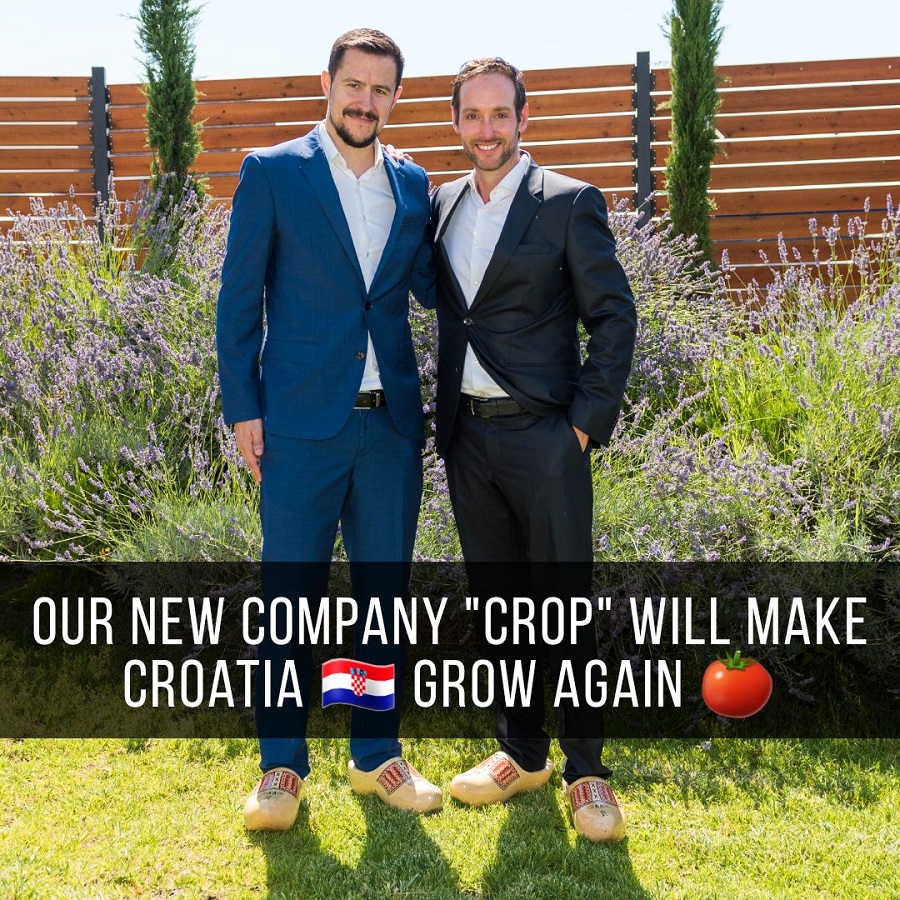
''For years, I've been struck by the fact that Croatia, the country that has fed the entire region, imports more than it exports,'' says Jan de Jong.
"Apart from adoring them privately and even planting them in front of our house, the reason is that our partners from the Netherlands specialise in this production. Their knowledge is what prompted us to embark on this story. Look, we know what entrepreneurship is about, but we're in agriculture a lot, too. We've been learning about it all for the last year, but thanks to our partners we also have the necessary know-how,'' he revealed.
Namely, they are both, so to speak, digital. Jerko is the director of the Split-based public relations agency VAJT, and Jan is the head of Webpower Adria and the initiator of the initiative for the introduction of visas for digital nomads. They are now the proud co-owners of CROP Croatia.
Before founding this joint venture, they researched both the Croatian and European markets and determined that there is a large area available for placement.
''We see a lot more space during the winter because everyone produces during the summer, while this technology allows for high yields even in the winter months where we've so far been almost entirely focused on imports.
The tomato is a very resistant and transportable crop. So, apart from love for it, this is a purely rational decision,'' Jerko emphasised.
One basic goal - Croatia will plant again!
Jan de Jong, a Dutchman who has been living in Croatia for 14 years, which is the same amount of time he has known Trogrlic, also realised that imports perhaps isn't the way to go for Croatia. "For years, I've been struck by the fact that Croatia, the country that has fed the entire region, imports more than it exports," wrote perhaps the most sought-after interlocutor of the media at the moment. Jerko's phone is constantly ringing as well, but he says - Jan receives far more calls and messages and apologises to everyone he doesn't get to answer.
''There are individuals in Croatia who, with more or less success, go through all the hardships of the road to agriculture, and now here come two new lunatics,'' says Jerko Trogrlić.
In conclusion, the plan of the company CROP Croatia is to bring modern technology in the field of agriculture from the Netherlands with only one goal - to make Croatia plant again! The original plan was to build a greenhouse of 50,000 square metres and provide jobs for 70 people, and the planned value of the investment was 100 million kuna. But given the interest in the story of these two friends, their business plan will surely be finalised.
True, he added, on their way into Croatian agricultural waters they discover ''some illogicalities'' in a country where agriculture is a strategic choice. What exactly those illogicalities where, he didn't reveal, but be stressed: "I think there is good will in both the competent ministry and the government to get some things started for the better.
"There are individuals in Croatia who are going through all the hardships of the agricultural journey with more or less success, and now here are two new lunatics," their Facebook post wrote. It should also be emphasised that in addition to achieving the goal of getting Croatia planting again, they are also working on demographic renewal. Both men are family men who have seven children between them.
Jan has four kids and I have three so he is better in that field even though we started at the same time! Our oldest children are seven years old, and the youngest are 9 or 10 months old. He had one more in between,'' laughed Trogrlic.
These entrepreneurs live in Split but are in Zagreb every week, and it will be exciting to watch CROP Croatia grow, both proverbially and literally.
For the latest travel info, bookmark our main travel info article, which is updated daily.
Read the Croatian Travel Update in your language - now available in 24 languages
Commercial Accommodation in August Had Fewer Beds, Non-Commercial 10% More
ZAGREB, September 21, 2020 - In August 2020, there were over 1.75 million beds in tourist accommodation, including 1.2 million in commercial and 555,000 in non-commercial accommodation, down 0.7% and up 10% on the year respectively, according to eVisitor.
Commercial accommodation accounted for 79.4% of all overnights (16.7 million), down 40% from August 2019.
Private accommodation, with 615,500 beds, accounted for 51.6% of all commercial beds, although it had 14,000 fewer beds than in August 2019. This type of accommodation accounted for 46% of all overnights (9.6 million), down 31.2% on the year.
Campsites accounted for 15.3% of all August overnights (3.2 million), down 47.6% on the year, although they offered 3,000 more beds, 255,200 in all, accounting for 21.4% of all beds.
Hotels had 176,500 beds, 1,100 more than in August 2019, accounting for 15% of all commercial beds and for 12% of all overnights, i.e. 2.5 million, down 51% on the year.
Accommodation on family farms had 2,600 beds, 182 more than in August 2019, and recorded 26,000 overnights, down 15% year on year.
Other commercial accommodation had 132,400 beds, 2,450 more than in August 2019, and recorded 1.3 million overnights, down 41.5% on the year.
Nautical tourism recorded 586,000 overnights in August 2020, down 25.1% on the year.
Non-commercial accommodation recorded 3.7 million overnights, down 16.5% on the year, accounting for 17.7% of all August 2020 overnights.
For the latest travel info, bookmark our main travel info article, which is updated daily.
Read the Croatian Travel Update in your language - now available in 24 languages
Croatia Registers 70 New Coronavirus Cases, Five Dead
ZAGREB, September 21, 2020 - Over the past 24 hours 70 new coronavirus cases have been registered in Croatia, bringing the number of active cases to 2,002, and five persons have died, the national COVID response team said on Monday.
Currently 297 patients are hospitalised, including 24 on ventilators, and 9,159 persons are self-isolating.
Over the past 24 hours, 3,296 persons have been tested for the virus and 201 patients have recovered. To date 262,132 persons have been tested.
Since February 25, when the first case of infection was recorded in Croatia, 14,992 persons have been infected with coronavirus, 253 of whom have died, while 12,737 have recovered.
For the latest travel info, bookmark our main travel info article, which is updated daily.
Read the Croatian Travel Update in your language - now available in 24 languages
SOA Says State of Security Stable in Croatia
ZAGREB, September 21, 2020 - The security situation in Croatia is stable, and in 2019 there were no event or occurrence which could have constituted a threat to the security circumstance in the country, the Security and Intelligence Agency (SOA) has reported.
There are currently no indications of potential destabilisation of the state of security in the country, reads the SOA report which was made public on Sunday.
Terrorism threat level low
Croatia's current national terrorism threat level continues to be low.
Although the possibility of a terror attack cannot be ruled out, in 2019 there were no indicators of rising threat of terrorism in the country.
The biggest risk concerning this issue are regional followers and sympathisers of Islamist terror organisations and returnees from Syria/Iraq, according to the report.
Seven persons with Croatian citizenship moved into the areas under the control of the Islamic State (ISIL), and two of them were men and five women.
The available data shows that during 2017 and 2018 the two men and a woman died in the Syria/Iraq region and the remaining women of Croat origin are still in civilian camps under the control of Kurdish and Arab forces.
SOA also highlights the fact that not any form of extremism has any strength or potential to topple the democratic constitutional order in Croatia.
The report notes that western Europe is faced with the strengthening of right-wing or anti-immigrant extremism, however, Croatia has not registered any serious anti-immigration extremist movement on its soil.
Islamist radicalism has spread on the southeast of Europe with a marked number of followers, while in Croatia it is marginal with just a dozen people having embraced Salafism, however, they have not shown any inclination to advocate violence.
A risk for the security situation in European societies can be returning "jihadists", and for instance Croatia's neighbours in southeast Europe have reported an estimated 1,000 people who are believed to move to Syria/Iraq to join ISIL. Of that number, a quarter (25%) have died in the Middle East, 30% are still there, and 45% have returned to their countries of origin in southeast Europe.
During 2019, 136 people returned from Syria to those countries in southeast Europe, and of them 12 were fighters who fought for ISIL, while the remaining were women and children.
Five APT cyber attacks countered in 2019
The SOA agency reports that during last year, the authorities detected and stopped five Advanced Persistent Threats (APTs) and some of those attacks had been directed against the ministries of foreign affairs and defence.
So far this year, APT has increased in intensity, and APT attacks are using the circumstances marked by the COVID-19 pandemic. In order to response to these challenges, SOA has set up a centre for cyber and information security.
Concerning the fight against narcotics trafficking, SOA recalls that recently the police in the Canary Islands have seized close to a tonne of cocaine worth more than €40 million, in an operation launched by the Croatian police. Croatia's law enforcement authorities had collected initial information about the transoceanic smuggling of large quantities of cocaine in which Croatian nationals were involved as members of the so-called Balkan cartel.
The operation to break the smuggling ring was carried out in cooperation with the Spanish Civil Guard and French customs authorities. It was also supported by Europol, the Drug Enforcement Administration - Zagreb Office, the UK National Crime Agency, Dutch police, and Bosnia and Herzegovina police.
Security circumstances in Croatia's southeast neighborhood unstable
The countries in Croatia's southeast neighborhood are encumbered with a lot of security, political, economic and social challenges.
Religious and ethnic nationalism still constitutes a problem in those countries.
Occurrences linked to Great Serbia extremism are noticed in some countries and they are evident through attempts to deny the territorial integrity and sovereignty of Croatia as well as of Kosovo, Bosnia and Herzegovina and Montenegro, reads the report.
This extremism is manifest in public appearances and speeches as well as rallies of Great Serbia extremist organisations.
Advocates of Great Serbia extremism are trying to stoke up anti-EU and anti-NATO mood in the southeast of Europe, and are promoting their attachment to Russia.
The report reads that radical interpretations of Islam are still present in southeastern European countries. There are enclaves in which some communities are practising radical Islamic doctrines and do not recognise the law and the democratic order of the countries in which they live, which SOA identifies as a security risk.
Emigration deteriorates position of Croats in Bosnia and Herzegovina
Apart from the political situation in which they are trying to reach the full equality with the other two constituent peoples in Bosnia and Herzegovina, the Bosnia and Herzegovina Croats are also facing a trend of economic emigration, and the further downsizining of this community will affect their survival and consequently the multi-ethnic nature of Bosnia and Herzegovina.
When it comes to the topic of irregular migrants, their numbers have been rising on the eastern Mediterranean route. The Frontex statistics show that along this route, which is also called the Balkan route, there were an estimated 82,000 illegal migrants last year, or 46% more than in 2018.
The report underlines that Croatia should strengthen its energy independence and that the LNG terminal would boost the energy security of the country and its neigbours.
The SOA also highlights that white-collar crime and corruption can stifle the economic development of the country.
For the latest travel info, bookmark our main travel info article, which is updated daily.
Read the Croatian Travel Update in your language - now available in 24 languages
Flights to Croatia: Eurowings Reduces Traffic to Croatia in October
September 21, 2020 - The latest news for flights to Croatia as Eurowings reduces traffic to Croatia in October.
Croatian Aviation reports that Eurowings has announced its flight schedule for October. The company will continue to operate to destinations in Croatia, but several lines that were in operation in September will no longer be available. The company will continue to operate to three Croatian airports.
In September, Eurowings had as many as 76 weekly rotations to Croatia, operating to six Croatian airports: Zagreb, Pula, Rijeka, Zadar, Split, Dubrovnik, and Zagreb. In October, the company will operate only to Zagreb, Split, and Rijeka.
Lines to Split
Eurowings will have 5 routes to Split Airport in October, only one less than in September. The Split - Hanover line is canceled while the following remain in traffic:
Split - Dusseldorf 3 times a week, every Tuesday, Thursday, and Saturday (one flight less per week compared to September),
Split - Hamburg 2 times a week, every Tuesday and Sunday (two flights fewer than in September),
Split - Cologne 2 times a week, every Thursday and Saturday (four flights fewer than in September),
Split - Stuttgart 2 times a week, every Thursday and Saturday (two flights fewer than in September),
Split - Berlin 2 times a week, on Tuesdays and Saturdays, as well as in September.
Lines to Pula, Zadar and Dubrovnik are canceled
Eurowings regularly operated on routes to the three airports in September, but will not October. The following lines are canceled:
Pula - Dusseldorf,
Zadar - Cologne,
Zadar - Stuttgart,
Dubrovnik - Dusseldorf,
Dubrovnik - Berlin,
Dubrovnik - Hamburg.
18 operations per week to Zagreb
Eurowings will keep the same number of weekly flights to Zagreb as it did in September. The company will operate regularly on two lines: from Stuttgart and Cologne.
Zagreb - Stuttgart will operate 4 times a week, every Monday, Wednesday, Friday, and Sunday, identical to September.
Zagreb - Cologne will operate 5 times a week, every Monday, Wednesday, Thursday, Friday, and Sunday. The same number of weekly flights is available in September.
One active line to Rijeka
The company will continue to operate to Rijeka in October. Eurowings will maintain traffic on the Rijeka - Dusseldorf route, once a week, every Saturday. The last flight on this line has been announced for October 24. This year's second line, Rijeka - Hamburg, was canceled at the beginning of September.
In October, Eurowings will operate to three Croatian airports with 42 operations per week on 8 routes, which is almost 50% fewer weekly flights compared to September. Cancellations of individual departures still remain possible and will depend primarily on the status of bookings.
For the latest travel info, bookmark our main travel info article, which is updated daily.
Read the Croatian Travel Update in your language - now available in 24 languages
Join the Total Croatia Travel INFO Viber community.
Madjerka Hill: A Mystery of Medjimurje
September 21, 2020 - Madjerka Hill is better known as the mystery of Medjimurje. From up there, you can see 4 countries, taste the most delicious wines, and enjoy breathtaking views.
Mađerkin breg (Madjerka Hill) stands 341 meters above sea level, only three and a half meters lower than Mohokos, which is the highest point of Medjimurje. The view extends to 4 countries - Austria, Slovenia, Hungary, and Slovakia. You can see Zagorje, and in clear weather, you can also see Sljeme. It was named after Emilia Krauthaker, better known as Mađerka (Madjerka). Emilia was born on July 22, 1889, on St. Mary Magdalene in Budapest. Symbolically, the Municipality and Parish of Strigova celebrate their day on July 22. Nives Kutnjak told Matej Scavnicar for eMedjimurje about the history of Madjerka Hill, as she wrote her thesis on this topic back in 2018.
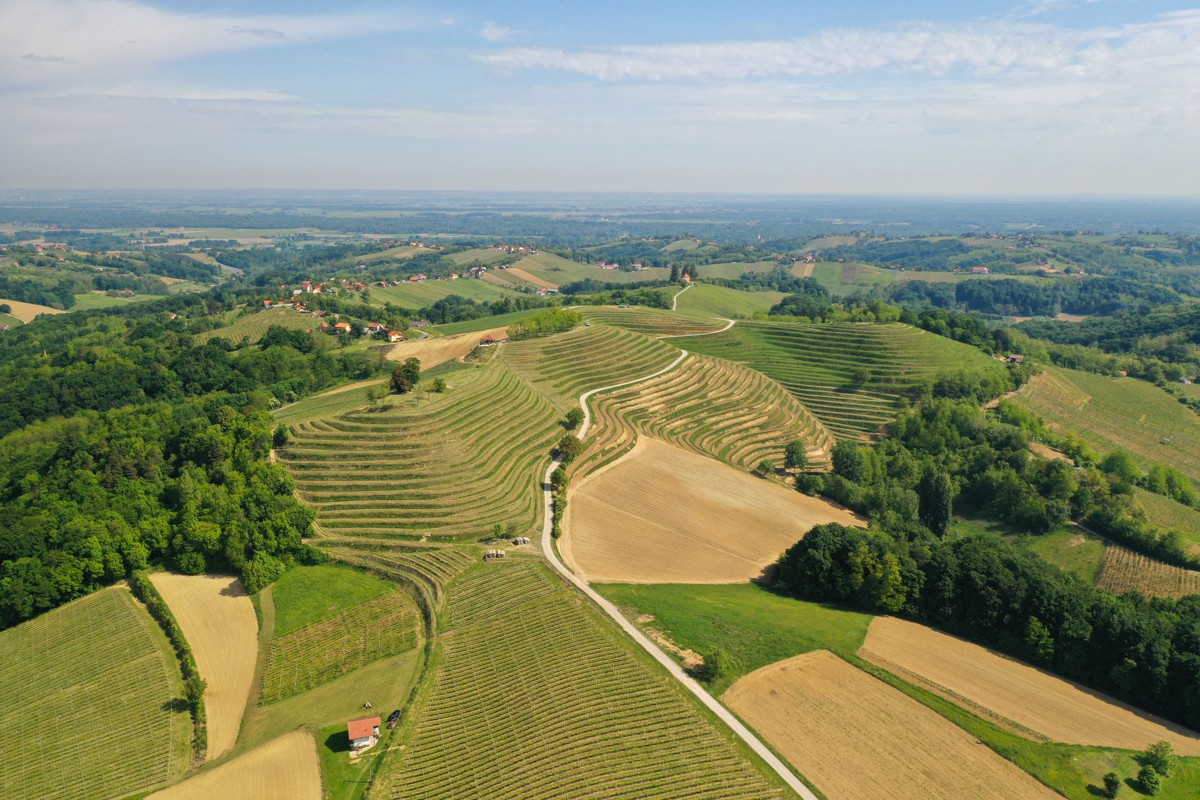
Madjerka Hill | Photo by eMedjimurje
"Emilia Krauthaker moved to this area around 1940. She came for her husband, a Hungarian soldier, i.e., an officer and a major, Albin Krauthaker. The communists killed him in 1945, and she was left alone. Madjerka's husband, Albin, also had a sister who married a rich trading family Strahonja from Cakovec. The whole street around the health institution in Cakovec was theirs. Strahonja and his wife Rozika, Albin's sister, lived on the first part of the hill while Emilija, better known as Madjerka, lived on the second part of the hill. Around 1958, when nationalization arrived in this area, everything was taken away from these two families. They left them only a space of 10 acres. All the surrounding local population came to Madjerka hill to work for Emilia; they even came from neighboring Slovenia. Emilia had a large vineyard, but poverty was growing. From the beginning, she could still pay the workers with the wine she sold and the chickens she had. She was selling eggs in Strigova, and when asked: "How does she live", she would respond that she lives from those few eggs and is nourished by the beauty of the nature that surrounds her.
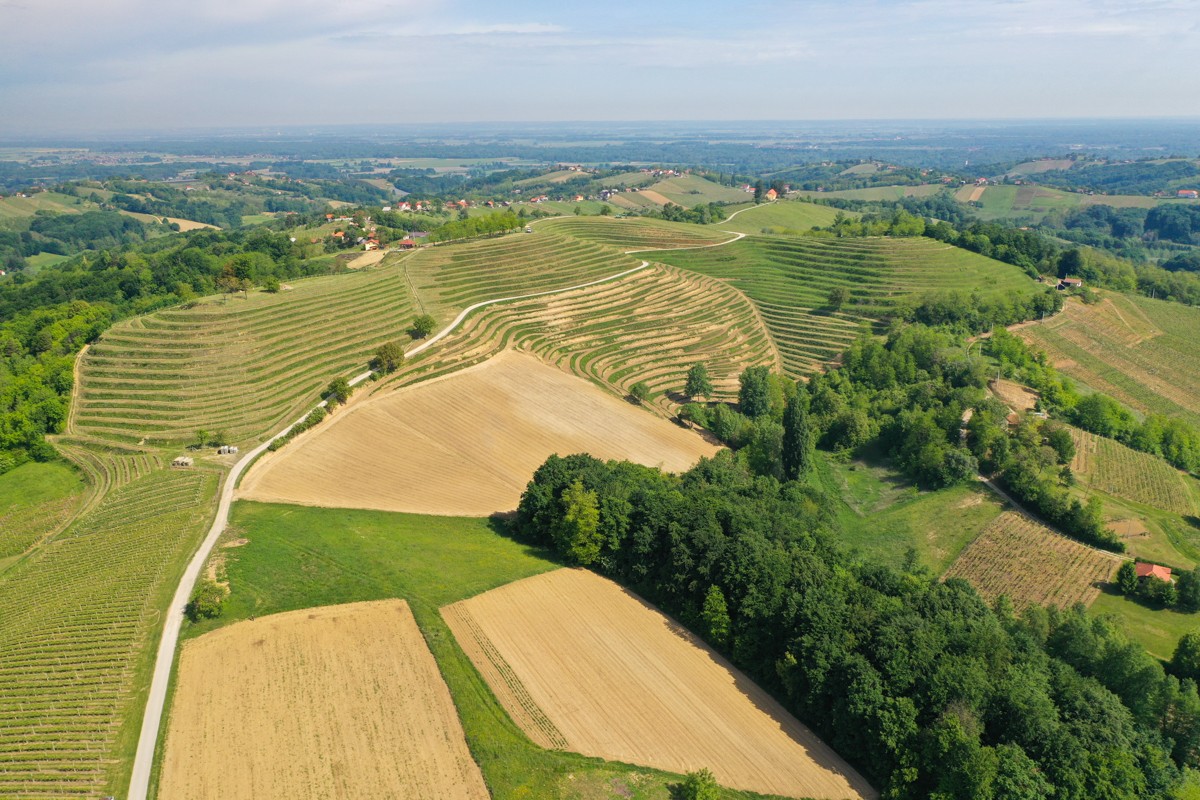
Madjerka Hill | Photo by eMedjimurje
The vineyards failed, but she did not want to sell her land even though she had buyers long ago. It slowly began to decay.
Emilia was accustomed to a gentleman's life. For the time when women in the countryside did not know how to bake even an ordinary cake, she baked top-quality cakes, cream puffs, etc. Besides, she was a famous dancer, a ballerina in Budapest. Emilija had no descendants, but the Krauthaker family, the descendants of her husband who inherited Madjerka Hill, sold the land in 2014 to the current owners, the wine-making families - Cmrecnjak and Stampar."
The founder and owner of the Cmrecnjak Winery, Rajko Cmrecnjak, fondly remembers his childhood memories about Madjerka Hill.
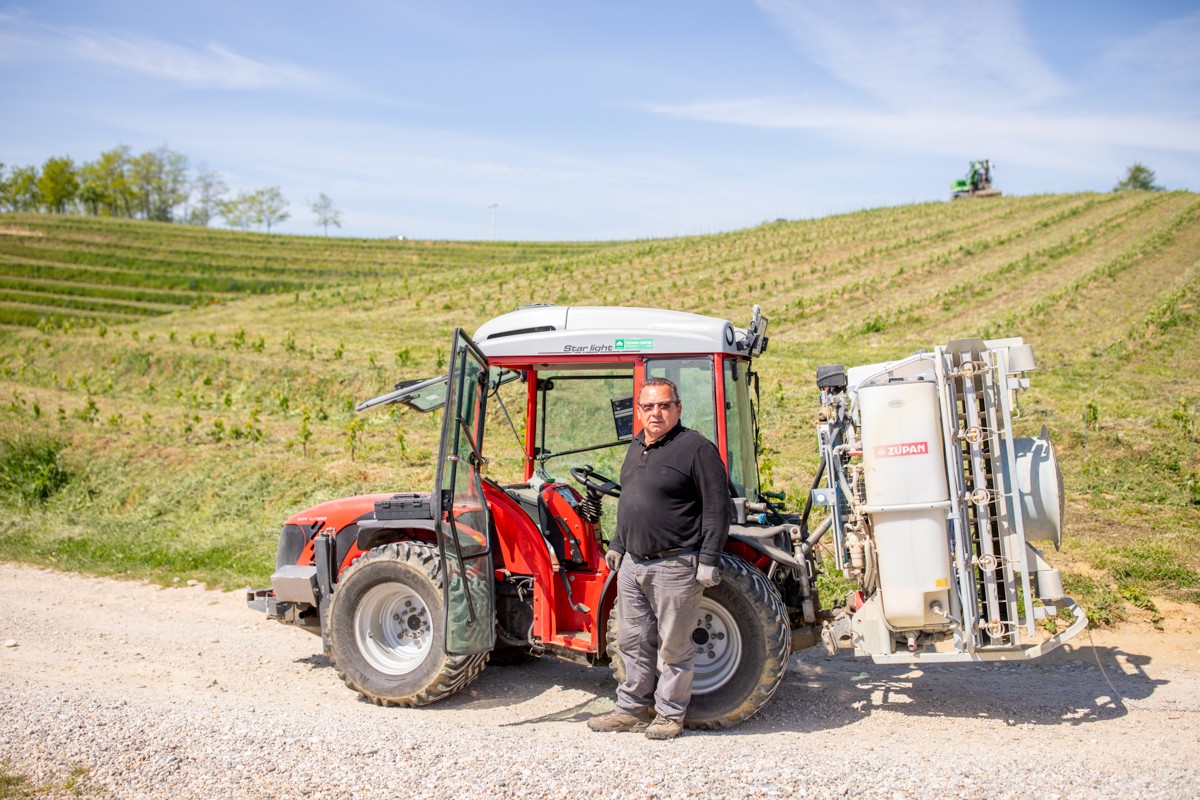
Rajko Cmrecnjak | Photo by eMedjimurje
"All my life, I have been connected to Madjerka Hill. Even as a child, my window looked into the distance at the terraces of Madjerka Hill. The sun is setting behind Madjerka Hill, and I remember watching the sunsets through my house's broken window. At the beginning of the nineties, we started to be more serious about viticulture. Even then, I dreamed of having our vineyard on Madjerka and that one day, we could take casual or intentional travelers there and show the best position for growing vines in Medjimurje. I would dare to say that the biggest step forward of our winery in recent times was when we bought the so-called Madjerka Hill. This area is undoubtedly the highest quality wine-growing position in Medjimurje and beyond. The condition in which we found Madjerka Hill after the purchase was not desirable at all. It was overgrown with thorns and bushes; it was a state of thickets, the forest's initial degradation stage with difficult access or extreme inability to access in some parts. It was a great challenge for our winery," says Rajko Cmrecnjak and proudly concludes that the wine produced from Madjerka Hill has already won a gold medal in wine evaluation.
Fifty meters below, driving through the terraces of Madjerka Hill, eMedjimurje meets David Stampar, the successor of the Stampar Winery, who planted 14,000 Pushipel vines a few months ago.
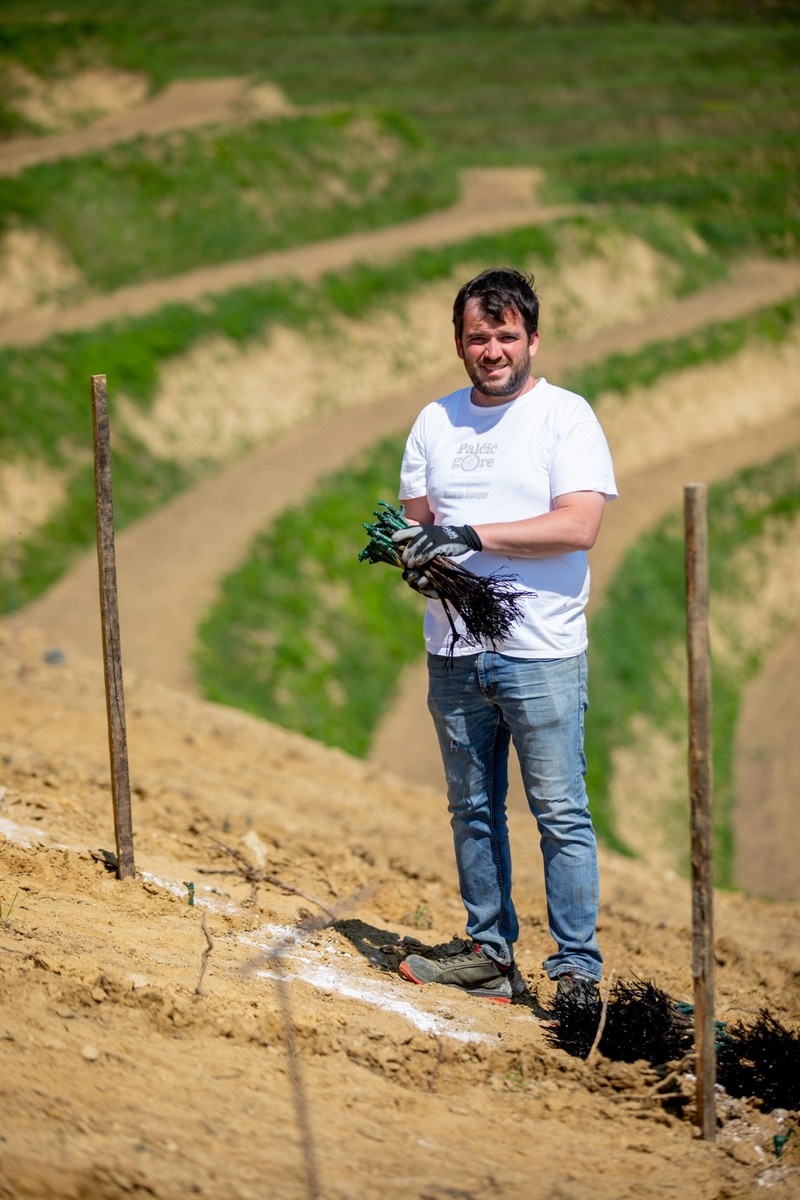
David Štampar | Photo by eMedjimurje
"Madjerka Hill is a special place for me; I have known about that hill since I was a child. At that time, I never dreamed that I would be a co-owner of this beautiful lookout together with my family one day. So far, we have planted 25,000 vines of Pushipel, Cabernet Sauvignon, Merlot, and Cabernet Franca. Next year we plan to plant another 15,000 vines of Pushipel and Sauvignon," says David.
Not so long ago, Art Colonies were held on Madjerka Hill
"Art colonies were held from 2000 until 2005. These colonies were attended by amateur artists - amateur art associations from Medjimurje, Varazdin, and Slovenia. The idea of TZO Strigova was to slowly start branding this beautiful, natural lookout point that could become an important point of the tourist offer of our region in some future times. Other events used to be held - the celebration of May 1 and various bicycle tours," says Josip Mikec from the local tourist board.
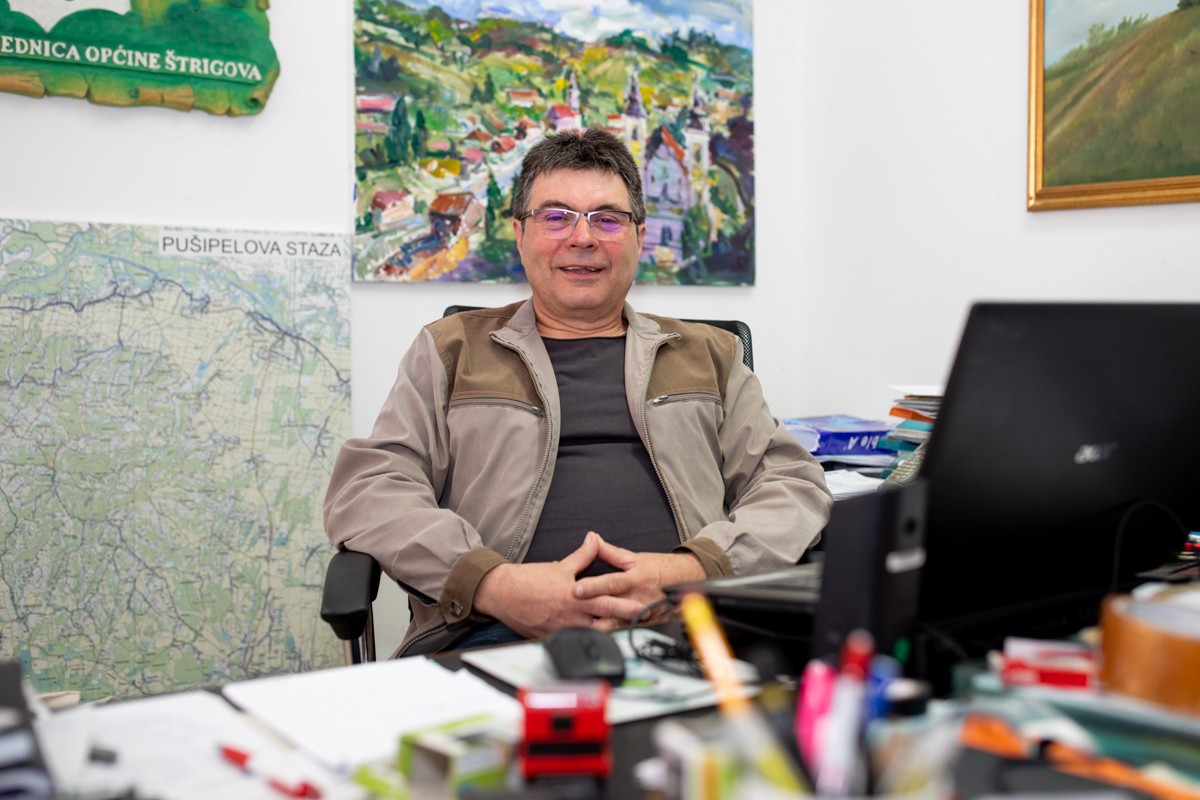
Josip Mikec | Photo by eMedjimurje
Madjerka Hill experienced its most significant popularity in 2015 when Sime Strikoman took a millennial photo in the shape of a cluster on Sunday, July 19, at the Days of the Strigova Municipality. Then a record was set in drinking gemišt (wine+sparkling water). At the same time, 1,034 gemišt drinks were consumed.
"Madjerka Hill was known before, but only the hosts from nearby villages and a few nature and hiking lovers. Some targeted introduction and presentation of Madjerka began with the Art Colonies to expand millennial photography to the whole of Croatia and Slovenia. Since then, Madjerka has been practically an indispensable point of various events from Urbans, Strigova Nights, First Day of Summer, New Year's Eve... Today, no Medjimurje resident has not heard of Madjerka Hill," says the expert associate of TZO Strigova, Josip Mikec.
In agreement with the owners, the Municipality of Strigova has registered the project of Vidikovac "Goričko sviralo" to the INTERREG Hungary Croatia EU fund, and a positive solution is expected. The value of the project is 1,698,366.46 euros. The project aims to maintain and develop the tourist and historical significance of this unique hill. In addition to the construction of a lookout point run by the Municipality of Strigova and the Strigova Tourist Board, the construction of a camp, souvenir shop, wine tasting room, and cellar is also planned.
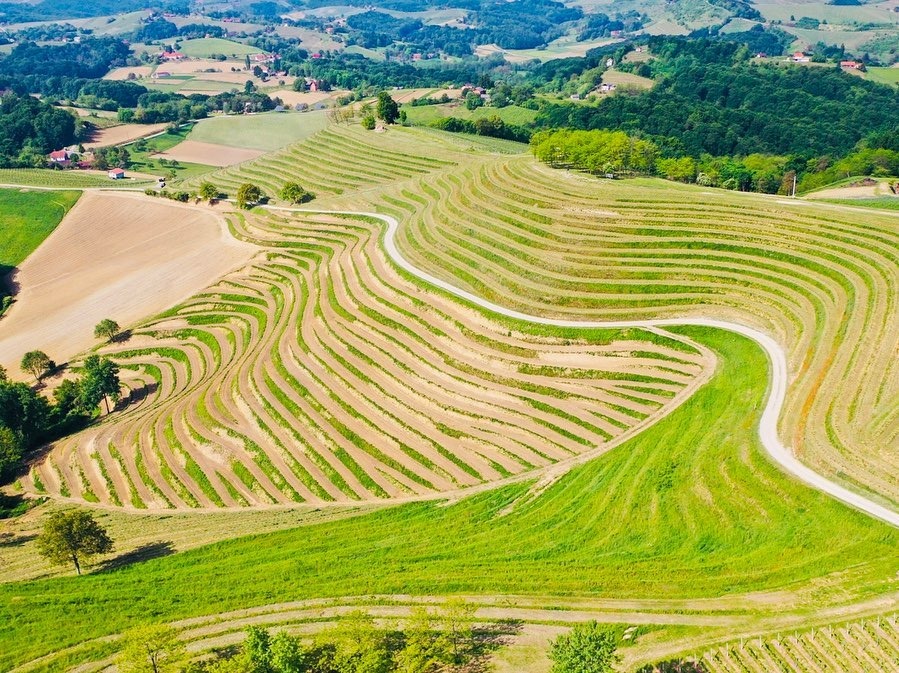
Madjerka Hill | Photo by Stampar Winery
What exactly is the secret of Madjerka Hill?
Maybe a beautiful natural lookout, terraced vineyards, a view, fresh air, peace, quiet, the chirping of birds, or the smell of grapes?
Let the secret remain hidden.
Discover for yourself what inspires many photographers to make the pilgrimage to Madjerka Hill, wanting to capture that perfect moment of sunset or sunrise. This is what the hardworking people from Štigova, led by Cmrecnjak and Stampar, who nurture this hill and keep its secret, want.
For the latest travel info, bookmark our main travel info article, which is updated daily.
Read the Croatian Travel Update in your language - now available in 24 languages


